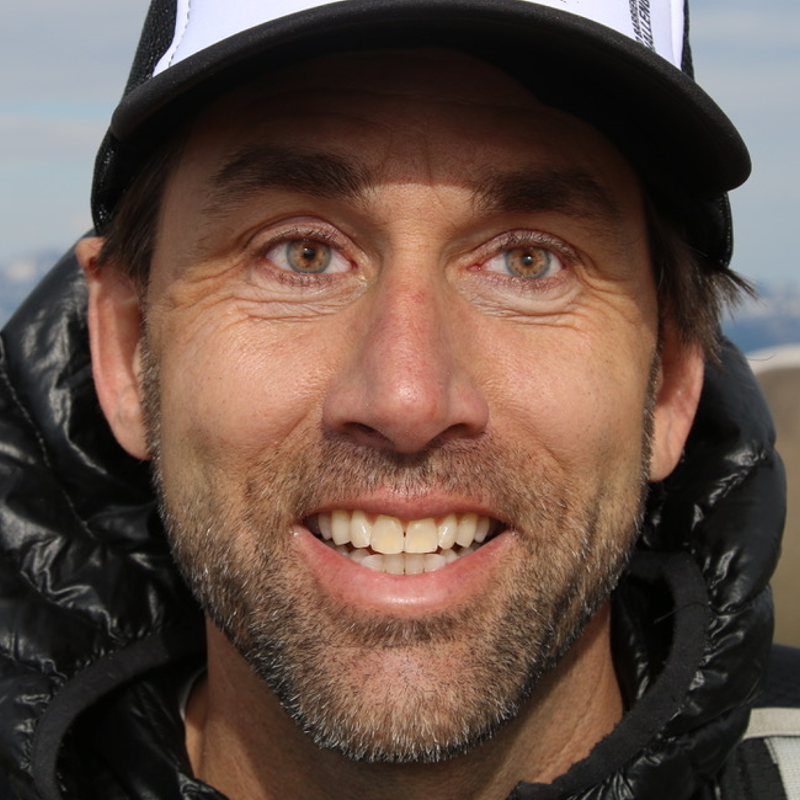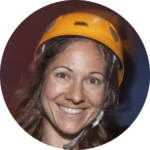Blind Adventurer Breaking Through Barriers
"I think this is the best time in history, the most precious time in history to be a pioneer, to reach out, to seize hold of adversity and challenges we face, to harness energy not only to transform our own lives but to elevate the world around us"
Erik Weihenmayer, blind since the age of 14 due to retinoschisis, made history by becoming the first blind person to summit Mt. Everest on May 25, 2001. By 2008, he accomplished the Seven Summits challenge, climbing the highest peak on each continent, starting with Denali in 1995. Erik's remarkable achievements garnered global acclaim, including a Time cover story, and he authored several books, including his memoir.
Despite his blindness, Erik excelled in wrestling and rock climbing, eventually becoming a teacher and coach. He co-founded No Barriers, a movement dedicated to helping people overcome obstacles and lead purposeful lives. Erik embodies the motto “What’s Within You Is Stronger Than What’s In Your Way,” exemplified by his accomplishments such as kayaking the 277-mile Colorado River through the Grand Canyon in 2014.
🧑🦯 Is completely blind since being a teenager
🥇 First Blind Person to climb Mt Everest
🎥 Filmed with Will Smith
📰 Featured on cover of Time Magazine (2001)
🎗️ Founder of 'No Barriers' Organisation
🥇 First Blind Person to Kayak the Colorado River
📣 Motivational Speaker and Author of several books
Founder of 'No Barriers*
World 🌍
2003 - ongoing
Provide transformative programs and experiences that shift mindsets, create belonging, and foster self-discovery to elevate individuals and their communities.
The No Barriers framework teaches you step-by-step how to break through your own challenges and live a driven, purposeful life. Despite the barriers, both big and small that each of us face, we can learn how to push past them, reconnect with our purpose, and unleash the best in ourselves and others.
Learn more
Worldwide Climbing and Mountaineering Expeditions
World 🌎
1990s - ongoing
Climbing some of the most iconic routes and climbing the highest mountains around the planet.
First Blind Person to Kayak Grand Canyon
USA 🇺🇸
Sep. 2014
277 miles long. Joining Erik blind Navy veteran and accomplished kayaker Lonnie Bedwell.
With solid rock walls carved a mile deep by the mighty Colorado River, the Grand Canyon is one of the great natural wonders on Earth with a fearsome reputation as one of the most daunting whitewater venues in the world. Lonnie and I have spent the last several years training and developing innovative systems for kayaking rapids with the help of high-tech radios and verbal commands from experienced guides.
Summit Alpamayo
Peru 🇵🇪
2012
First blind Person on Alpamayo (19,511 feet / 5,945 meters)
Many participants enter the race with no intention of winning, but with the goal of joining the elite group of finishers and earning the coveted Texas Water Safari finisher's patch.
Creation of Adventure Race Challenge
USA 🇺🇸
2006
In 2006, Erik Weihenmayer launched the Adventure Team Challenge, a pioneering race where teams of disabled and non-disabled athletes compete, and his team won for five consecutive years. I
In 2010, he became the first blind person to complete the Leadville 100 mountain bike race, riding a tandem bike through elevations above 10,000 feet. In 2011, Weihenmayer's Team No Limits raced across Morocco's deserts and mountains for a month, finishing second on the ABC reality show "Expedition Impossible."
"Blindsight" Expedition to Everest
Nepal 🇳🇵
2004
With Jeff Evans, Sabriye Tenberken, and six blind Tibetan teenagers, Erik climbed the north side of Everest to 21,500 feet, achieving a record for the highest altitude ever reached by a group of blind individuals. This journey was documented in the film "Blindsight"
"Blindsight" follows six blind Tibetan teenagers on their quest to climb the 23,000-foot Lhakpa Ri mountain near Mount Everest. Their journey is especially remarkable given the cultural challenges they face: feared by their parents, scorned by villagers, deemed sinners by devout Buddhists, and considered cursed. Supported by Sabriye Tenberken, a blind German social worker who founded the first school for the blind in Lhasa, the teenagers invite renowned blind mountaineer Erik Weihenmayer to visit their school after learning of his Everest summit. Erik joins them in Lhasa and helps the students and their educators reach heights they had never achieved before.
Carstensz Pyramid (Eight Summits Completed)
Indonesia 🇮🇩
Aug. 2008
Erik had already completed the traditional version of the Seven Summits. Carstensz was an add-on.
Three friends set out on a 1,200 km bike packing trip across Togo, Africa. With few plans on where they were staying or what they were eating, they took each day as it came and fully immersed themselves in being present and living in the moment.
Relying on the kindness of strangers and finding unexpected joys in simple moments they discovered it was truly the journey rather than the destination.
Seven Summits Completed
USA 🇺🇸
Aug. 2002
By climbing Mount Kosciuszk Erik completed the traditional Seven Summits.
Date of successful summit:
Denali: June, 1995
Kilimajaro: August 1997
Aconcagua: January 1999
Vinson Massif: January 200
Everest: May, 2001
Elbrus: June 2002
Kosciuszko: August 2002
Erik climbed some of these mountains several times afterwards, or had several attempts before a successful summit.
Climbing Mt Everest
Nepal 🇳🇵
May 2001
Erik became the first bind person to summit Mt Everest. This success landed him on the Time Magazine cover.
Straddling the border of Nepal and Tibet lies the highest point on Earth, Everest, my fifth continental summit. After flying into a small village called Lukla at 8,000 feet, 9 days and about 40 miles block your way to base camp at 17,500 feet. My team and I chose to climb the South Col route, steeped in mountaineering lore and the same way taken by Everest pioneers Sir Edmund Hillary and Tenzing Norgay.
The most difficult part of the whole mountain comes right above base camp with numerous trips through the treacherous Khumbu icefall. A living beast, the icefall slides slowly down the Khumbu Valley creating an ever-changing landscape as huge chunks of ice, the size of school buses, calve off and shatter below. Zigzagging through the icefall are dozens of deep crevasses, some so wide the only passage is to lay rickety ladders across them.
Most expeditions rely on Sherpas, the local people who live in the Khumbu Valley, below Mt. Everest. The Sherpas transport team gear back and forth through the icefall to supply higher camps. Growing up and living at extreme altitude makes them very strong high up on the mountain, and they were indispensable for my expedition.
Below the top is the South Summit, separated from the true summit by a knife-edge ridge the width of a picnic table. On the right of the ridge is a 12,000-foot drop into Tibet and, on the left, a 9,000-foot drop into Nepal. Next comes the infamous Hillary Step, 50 feet of vertical rock, just 300 feet from the top, a tiny island in the sky at 29,029 ft.
Climbing Denali
USA 🇺🇸
Jun. 1995
Climbing Denali as the first peak of the Seven Summits


 Erik has been guest on our 'Art of Adventuring' Podcast
Erik has been guest on our 'Art of Adventuring' Podcast

